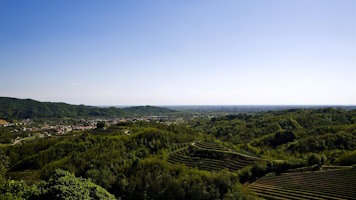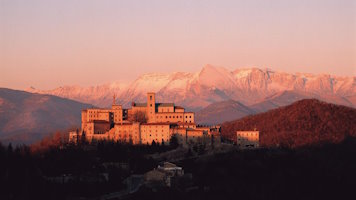Church of the Holy Trinity
[15th; 18th; 19th; 20th centuries]
The building, which has been known since 1455, was remodelled over the centuries: the apse was added in 1789, the sacristy in 1830, and the portico was built in 1930. The church was also renovated following the damage from the 1976 earthquake. Originally, the church was dedicated to Saint Daniel, and only in the 18th century was it named after the Holy Trinity. It features a rectangular hall with a square apse and vaulted ceiling. The square-plan portico is characterized by a pediment supported by columns resting on a sturdy parapet. The architraved door is flanked by two rectangular windows. On the left side of the hall stands the bell tower, which opens up into large single-lancet windows. Following the 1976 earthquake, some fragments of previous frescoes have emerged on the walls of the central hall. Four layers of painting from different periods can be distinguished: a very ancient layer with only a few traces remaining below the more recent fresco depicting the Adoration of the Magi; a band with zoomorphic motifs, possibly from the 16th century; an Adoration of the Magi from the 15th century; and a more recent layer showing traces of the Life of Christ from the 16th century, attributed to Giampaolo Thanner. In the central niche of the altar there is a wooden group, lacquered in gold, depicting Jesus, the Coronated Virgin, and the Eternal Father dating back to the 19th century.

ph. Giorgio Bianchi, Archive MCC

ph. Giorgio Bianchi, Archive MCC

ph. Giorgio Bianchi, Archive MCC

ph. Giorgio Bianchi, Archive MCC














